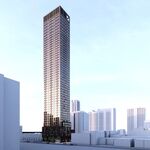EnviroTO
Senior Member
Bloor rebuild is now slated to be about $200M (Union Station type upgrade to the lower level).
That upgrade provides an eastbound Bloor line platform. The master plan for the major upgrade proposed for Yonge-Bloor included that platform in addition to a new westbound Bloor platform and a new centre platform on the Yonge line. This new proposal is cheap because it doesn't do half of what the other proposal does (although considering it gets one of the three platforms built is not a complete waste). Does the bigger capacity problem exist on the Bloor line or the Yonge line? I am pretty sure the Yonge line is the issue so the only way to reduce dwell time in the station is to (a) get people on and off quicker which requires more open doors which a platform on both sides achieves, (b) reduce the risk of people and debris getting on the track so trains can enter and exit the station safely at full speed which requires platform doors, and (c) running the system like clockwork with a train arriving on time and automated doors closing on time which requires ATC.






